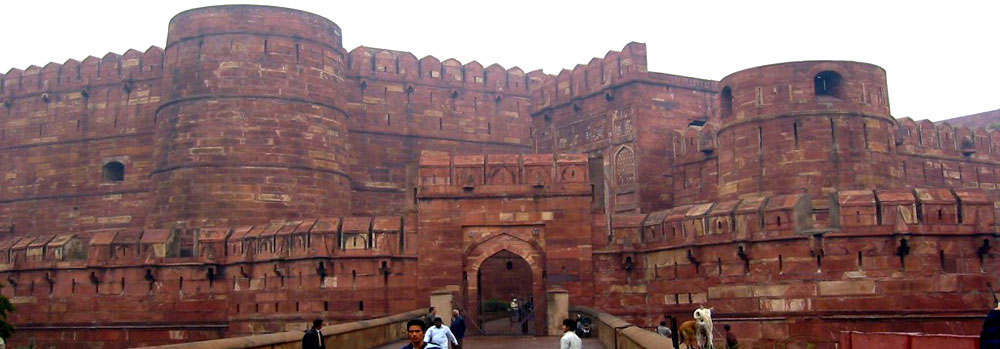|
The history of Agra dates back to antiquity. The Sanskrit root ‘gr’ embedded in Agra indicates its existence from pre-historic times, as a ‘fortified city’ or a ‘city with a citadel’. The grounds for believing that Agra as a city did exist , lies in the fact, that it was this very region, which was known as Indraprastha, the capital of Pandavas. Agra was known as Yamaprastha during the Mahabharata period. During the Mughal period, Agra was at its peak of magnificence. [Ref: Forts and Palaces of India by P.V.Begde pg.136]
Akbarabad was a name given to Agra by Shah Jahan, in honour of his grandfather, on his accession to the Mughal throne. A large number of coins in gold and silver bear testimony to the change of the name of Agra to Akbarabad. Akbarabad remained popular up to 20th century A.D. Agra [Akbarabad at the time] also has the distinction of being the birth place of the celebrated Urdu poet, Mirza Ghalib. [Ref: Handbook on Agra Fort by W.H.Siddiqui , pg 12,published by ASI.]
In the words of Abu’l Fazal ; “Agra is a large city and possesses healthy climate. The river Jamuna flows through it for approx 16 kms; on either side are delightful villas and stretches of meadows. It is filled with people from all countries and is the emporium of the traffic of the world. It contains more than 500 buildings of masonry, based on the beautiful design form of Bengal and Gujarat which sculptors and artists have fashioned as architectural models……”
Father Monserrate, the author of Commentarius, was a Jesuit priest,who visited Agra in 1580 AD noted that …. the city was “famous for its mild climate ,of its fertile soil , of its great river [Jamuna], of its beautiful gardens , of its fame that spread to the ends of the earth, and of its large size” Father Monserrate established a church , an orphanage and a college at Agra , which also had a burial ground .In fact it was the only Christian cemetery in Northern India for quite a period.
Jahangir, the Mughal emperor notes in his Memoirs…… ‘in the number of buildings it is equal to several cities of Iraq, Khurasan, and Mawar –un -Nahar put together. The mass of the people is so great that moving about in the lanes and bazaars is difficult’.
Niccolao Manucci a Venetian, served in the Mughal army as a gunner and participated in the battle of Samogarh in 1658 AD. He mentions “the city of Agra is a large one with circumference of twelve leagues and is surrounded by many gardens………..the fort is placed on the bank of the river with a ditch which can be filled with water from the river .On both sides, the fortress is adorned with beautiful palaces for the princes of the blood-royal and the grandees”.
An era marked by invasions and fortifications, where power was symbolized by grand palaces and grander forts………during such time was built THE AGRA FORT.
Fortification has always been and still is the prerogative of the mighty; the dividing line between the ruler and the ruled.
The mighty towers and overwhelming facades instilling fear and awe in the bravest of the brave…….yet there were the few who overcame the daunting adversities and made their mark in history, a signature ……. that still exists.
Structures built as a sign of prowess remind us all of the grit and valour of the brave men and women who captured, destroyed and built such overwhelming edifices.
The Agra Fort, also known as the “Lal –Qila”, “Fort Rouge” or “Qila-i-Akbari”, is the highlight of the city of Agra, then capital of the Mughal Sultanate .
A symbol of power, strength and resilience, as it stands today in full glory.
|

